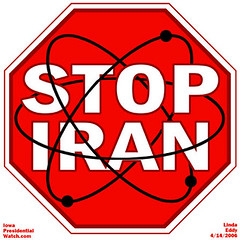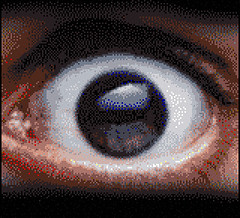**************
Hi! I hope you can help me out. My trusty, 12-year-old, 36-inch tube TV finally went kaput, and I'm now in the market for a flat-panel TV.
I've been out of the TV technology loop for a quite some time now, and I'm absolutely lost. How do I know which type to get? I see a lot of words and acronyms thrown around, and none of them mean anything to me—for example LCOS, LCD, DLP, and of course plasma.
And what does it mean when someone is talking about 720p, 1080i, and 1080p? What the difference between HD ready, HDTV, and HD compatible? I didn't have to consider any of these things 12 years ago as my choice back then was either a tube or rear-projection TV and that was it!
Please help an old fellow out will you? Thanks!
Submitted by: Jeremiah L. of Nashville, Tennessee
***********************************************************************
Answer:
Jeremiah, pieces of this have been touched on in previous questions of the week, but let’s try to summarize it and update it (things have changed, just in the past few months).
Buying an HDTV can be incredibly difficult and complex because there are so many considerations.
Display format (nature of the image):
The numbers 720p, 1080i and 1080p refer to two different characteristics of the displayed image, it’s resolution (number of dots comprising the picture) and whether it is interlaced or progressive.
The HDTV resolutions are 1280 x 720 (720i or 720p) and 1920 x 1080 (1080i or 1080p). Other things being equal, higher resolutions are better. The letter p or i after the number indicates the scan format. A progressive display transmits the entire image every frame. An interlaced display transmits the frame in two fields sent one after the other, the first containing the odd-numbered rows of pixels, the second field containing the even rows.
Progressive is better than interlaced. There are some lower resolutions (below 720) which fall into the “EDTV category (not really HDTV) and which should probably be avoided at this point.
Note that the HDTV standard requires all sets to display all resolutions, but fact that you can watch a 1080p resolution image on a 720p set does not mean that you get the same quality that you would get on a 1080p set; you don’t.
Display technology (how the image is formed):
This refers to how the image is created, rather than its format. There are a lot of technologies and it can be hard to keep the technologies and their pros and cons straight.
Here’s a list, followed by a brief description:
Direct view displays:-Direct view LCD-Direct view PlasmaProjection displays:-CRT-LCD-LCoS-DLPIn Direct view displays, you are looking directly at the image as it is formed; the “screen” is the actual image formation device.
In projection displays, the actual image is formed in a small imaging device (often only an inch or so in size) and then projected onto a 40” to 70” screen for viewing. Except for CRT projectors, which are typically 5” to 7” in size, all of the other formats are sometimes also called “microprojection displays” because the actual image as formed prior to projection is so small.
There are also “front projectors”, which look and work like an old style slide projector and screen, and “rear projectors” where the entire projection assembly and screen are all built into the cabinet.
Here is a capsule summary of each type:
Direct view LCD:
Essentially a very large laptop computer lid. Thin and flat. By far the most common and probably best display at sizes under about 42”. Can be made at any of the common resolutions. Although available at sizes up into the mid 50-inches (and still larger ones will become available in the future), these become VERY expensive at sizes above about 42”, especially if the panel is also high resolution (e.g. 1080).
Contrast ratio (ability to produce truly black blacks) and response times (freedom from ghosting and smearing in fast moving action sequences) may be image quality issues in some displays. Won’t “burn in” and has nearly unlimited life (inexpensive backlight lamp replacement may be required after 5 to 10 years).
Direct view Plasma:
Another thin and flat display type, but very different from LCD.
Better contrast ratio and response time than LCD. Really comes into its own at sizes of 46” and above, where its currently less expensive than LCD (but LCD will “catch up” for cost in the mid 50-inch size range in another year or so). Subject to “burn in” from static images, and has a limited albeit long life (by most estimates, about 60,000 hours in current production sets).
Uses relatively a lot of power and many models have cooling fans (potential noise issue). Generally, plasma panels with a 1020 resolution don’t exist (one or two large 1080p plasma sets do exist, and more will appear next year, but they are out of the price range of most consumers).
[micro]projection displays:-CRT:
Very high brightness old-style “picture tubes” projected onto a screen. In my opinion, any set using this technology should be rejected out-of-hand. While this is a relatively inexpensive technology (possibly under $1,000 for a 50-inch screen), no matter what the stated resolution, due to focus and convergence issues, these sets just do not deliver the image quality of any of the other technologies being discussed.
All of the following 3 technologies (LCD, LCoS and DLP) currently use a high intensity lamp as a light source. These lamps are quite expensive ($200 typically, but a few are $500 to $600) and they need to be replaced periodically. Although the manufacturers all quote lamp life as 5,000 to 8,000 hours, there are LOTS of reports on the web of premature lamp failures (often in under a year, at 600 to 1,200 hours of use), and in some instances it’s pretty clear that there are systemic problems with some models of lamps and sets using those lamps.
All of the set makers have been responsive to these issues while the sets were still in warranty, but once the warranty expires, you are pretty much on your own.
Note that many extended warranties, even if for 3, 4 or 5 years, only provide ONE lamp replacement under the extended warranty, and then you are on your own with regard to lamp replacement, but this is only a general comment and is not by any means universally the case. If you are buying an extended warranty, you need to ask about this.
Alternative to the use of these lamps are being developed, but for now, with one exception, it’s a characteristic of all microprojection display systems. Samsung actually sells a set with an LED light source instead of these high intensity lamps, but it’s currently expensive (about $4,000).
Development work is underway on laser light sources as well, but these are not currently available in any shipping products.
DLP:
The light is reflected off of one single Texas Instruments DMD device, which forms the image. Since there is only one device, red, blue and green are presented in succession by using a spinning color wheel inside the set (except for the previously mentioned Samsung set with an LED light source, which works by flashing different colored LEDs).
A small number of people can’t watch this type of set without difficulty, because the “eye-brain physiology” that is supposed to result in proper perception of a full color image from this sequential technology isn’t perceived the same way by everyone.
LCD:
The light is projected through three LCD microdisplays and onto the screen. There has been concern raised that the high intensity light will eventually damage color filters, resulting in deterioration of the colors over time. Not subject to “color wheel effect”.
LCoS:
The light is reflected off of 3 LCD microdisplays and onto the screen. The technology has some similarities to LCD and uses LCD elements, but like DLP it’s reflective rather than transmissive. Not subject to the “color wheel effect”.
With the exceptions of specific characteristics noted, all of these technologies can produce excellent images, which is not to say that all sets using them will.
Rather, differences in the design of specific TV set models are more significant than the technology used. Consequently, if you are considering a microprojection set of any type, you have to evaluate the set on it’s own characteristics and not solely on the technology used.
What can be said definitively is that if you can ignore the lamp issue (and perhaps even if you can’t), these sets have higher “bang for the buck” in 52-inch and larger screen sizes than either LCD or plasma direct view sets.
The cost of a set with a picture size of mid-50-inches to as much as 72” may be as much as thousands less (half or less) what a plasma or LCD direct view set of that size would run, with a 720p or 1080p picture that is equal or better in most regards. But these sets use more power, and they are larger .... these are not thin sets, and they have to stand on a table or stand, they cannot be hung on a wall.
Now let’s talk about some TV receiver characteristics unrelated to the actual picture.
There are three different transmission systems that you would ideally like to be able to receive:-NTSC-ATSC-QAM (preferably with “cable card” capability) NTSC is our standard “old” TV system, approved by the FCC in March of 1941 (before the Japanese attacked Pearl Harbor) and in use to this day. All TV sets can receive this.
Note, however, that some displays that you may look at are not TV sets, they are only monitors (they need an external tuner or other signal source).
ATSC is the system used to transmit digital TV over the air (HDTV is a subset of the broader category of “digital TV”, although the two terms are often used interchangeably). This is replacing NTSC, and over the air NTSC is currently schedule to “die” in February of 2009.
QAM is the system used by most cable systems to transmit digital TV over cable systems. If you have a QAM tuner, you may be able to receive unscrambled digital TV channels without a cable box. If you have QAM and a cable card slot, and if you get a cable card for the slot (typically from your cable company), you may be able to receive even scrambled, premium content without a cable box.
A set that is “HD ready” has only an NTSC tuner, but can view HDTV material if it is provided as a video signal from another component (a separate tuner, or a cable box, for example).
Note that for legal purposes, any set with the ability to display a 1280x720 or higher resolution picture is considered to be an “HDTV” display. While such a set may show a 1020p or 1020i broadcast, however, it won’t do so at full quality unless it is a 1920x1080 device.
“HD compatible” generally means “HD ready” plus having an HDMI interface socket, which brings us to the next matter:
Signal Input connections:
Since you will be watching not only over-the-air transmissions but also program material from cable systems, VCRs, Disc Players and perhaps computers, you need a variety of signal inputs to accept and allow connection of picture sources to the TV set.
Ideally, you will have almost all of the following types of connections available (and, ideally, two or more of most of them):
-Composite Video-S-Video-Component Video-Computer analog VGA-DVI-HDMI
Notes:-DVI and HDMI are electrically identical as far as the electrical signals carrying video is concerned; it’s possible to convert either to the other. However, there are signal compatibility issues which may keep any source (DVI or HDMI) from working with any TV set.
Problems are more common with a DVI source than with an HDMI source, but they sometimes occur even with an HDMI-to-HDMI connection.
-Most TVs don’t have a 15-pin analog VGA computer connection, but quite a few do. This is obviously more important to some people that to others.
-Just because you have the electrical connection doesn’t mean a given combination of TV and signal source will always work. There are 18 different digital TV broadcast formats approved for transmission in the US by the FCC. When you add non-broadcast sources and computers, the number of different possible signal types and formats gets even higher.
Unfortunately, everything doesn’t work with everything in every format.
But some sets are a lot more compatible than others. Unfortunately, you almost need to consult either detailed specification documents and/or user groups on the internet to be able to evaluate what really works with what.
Ok, enough (too much?) for the technical details.
Here are some buying guidelines:
-If you are looking at anything up to about 42 inches, then you are probably going to be getting a direct view LCD set
-If you want a thin, flat “mount on wall” set from 42 to 52 inches, then you have a choice of LCD or Plasma
-If you want a thin, flat “mount on wall” set of more than 52 inches, Plasma is currently your only choice
-At 50 inches and above, or if you want a 1920x1080 display, a microprojection display technology will be a LOT less expensive than LCD; 1080 plasma has only existed for a couple of months, only a couple of models currently exist and it’s outrageously expensive.
I know that this has been a long response. I hope that it was helpful.
The question, reasonable enough, has a surprisingly long and complex answer, which is why so many people buying new TV sets are so confused.
Submitted by: Barry W. of North Canton, Ohio
Sunday, December 17, 2006
Subscribe to:
Post Comments (Atom)














No comments:
Post a Comment